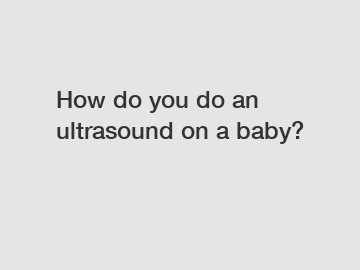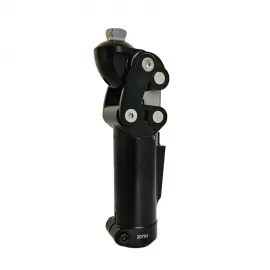How do you do an ultrasound on a baby?
How to Perform an Ultrasound on a Baby.
Ultrasound has become an essential diagnostic tool in prenatal care, allowing healthcare professionals to closely monitor the development and health of a growing baby. This non-invasive technology uses high-frequency sound waves to create images of the fetus inside the womb. The procedure is safe and painless for both mother and baby, and provides valuable information that helps in ensuring a healthy pregnancy. If you want to learn how an ultrasound is done on a baby, keep reading!
Preparing for the Ultrasound.

Before performing an ultrasound on a baby, proper preparation is necessary to ensure accurate results. The mother is typically advised to have a full bladder for the procedure. This helps to push the uterus up and allows for a clearer view of the baby. It's recommended to consume about 32 ounces of water one hour prior to the ultrasound.
The Ultrasound Procedure.
1. Positioning: The mother will lie down on an examination table and expose her abdomen. A special gel is applied to improve the contact between the ultrasound probe and the skin.
2. Transducer Placement: The ultrasound technician will then use a handheld device called a transducer. It emits sound waves that bounce off the baby's body and creates images on a computer screen. The technician will move the transducer gently over the abdomen, capturing images from different angles.
3. Image Interpretation: As the images appear on the screen, the technician will analyze and measure different aspects of the baby's development. These include the heartbeat, size, limb movement, and the position of various organs. The technician will also check for the presence of any abnormalities or potential birth defects.
4. Capturing Images: Throughout the procedure, the ultrasound technician takes still images or records video clips that can be saved for future reference. These pictures and videos often become treasured keepsakes for expecting parents.
5. Gender Determination: In certain cases, parents may request to know the baby's gender. This can often be determined during an ultrasound, typically around 18-20 weeks of pregnancy. However, it's important to note that gender determination is not the primary purpose of the procedure, and is usually performed upon request.
6. Wrapping Up: Once the ultrasound is complete, the gel is wiped off, and the mother can comfortably empty her bladder. The technician may discuss the findings with the parents or refer them to a doctor for further interpretation if necessary.
The Importance of Ultrasound in Prenatal Care.
Ultrasound plays a crucial role in prenatal care as it allows healthcare professionals to monitor the growth and development of a baby in the womb. By providing a visual representation, doctors can detect abnormalities, check for proper organ formation, and ensure the baby's well-being. Additionally, it enables the parents to bond with their unborn child and provides them with a remarkable firsthand glimpse into their baby's world.
Closing Thoughts.
Ultrasound technology has revolutionized prenatal care, allowing healthcare professionals to assess the health of both the fetus and the mother. By following the steps outlined above, ultrasound technicians can effectively perform ultrasounds, providing valuable information to parents and doctors. If you have more questions or would like to learn more about ultrasounds for babies, please do not hesitate to contact us.
Want more information on sell ultrasound machine, buy portable ultrasound machine, what is a mfm? Feel free to contact us.
Related Articles
-
115
0
0









Comments